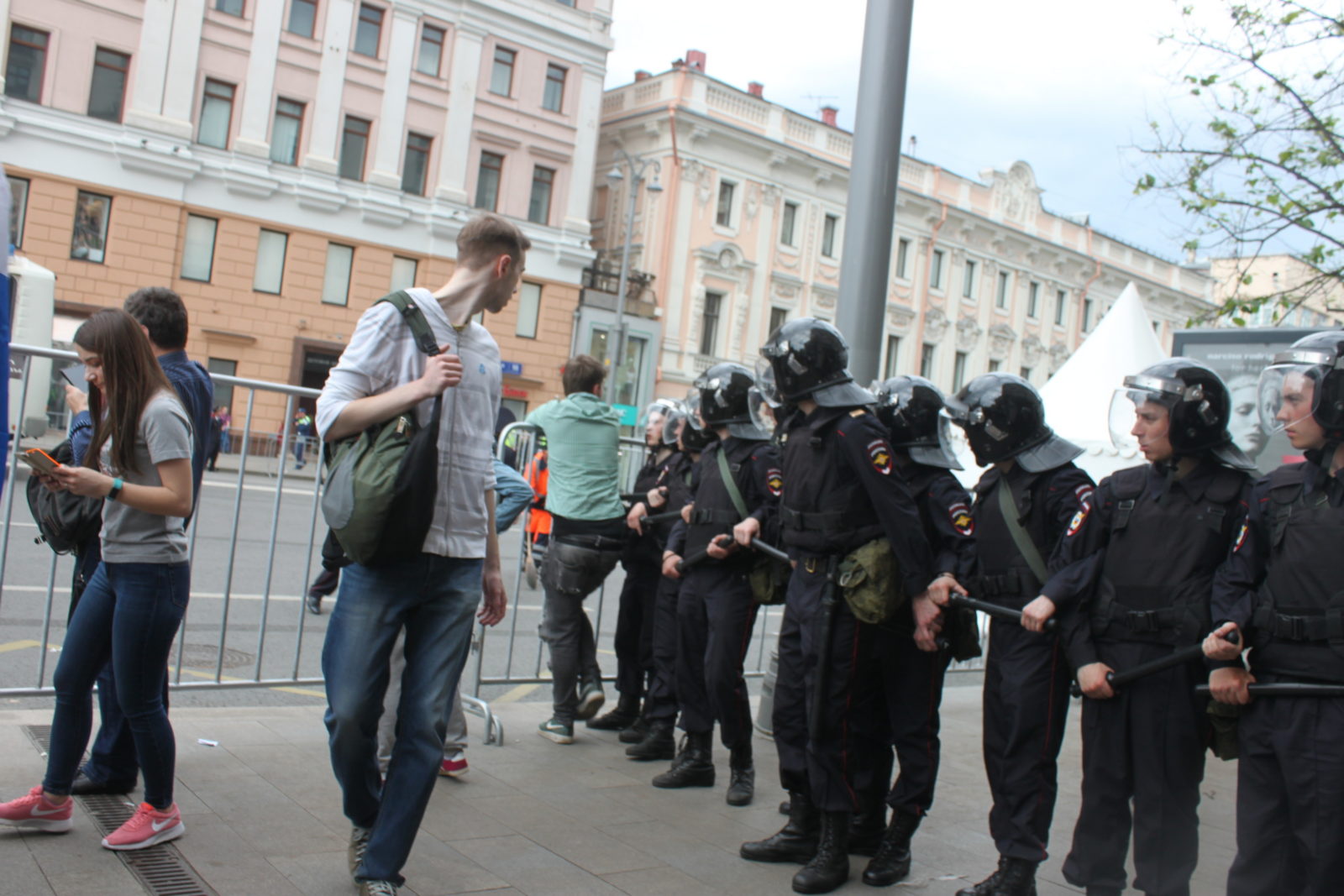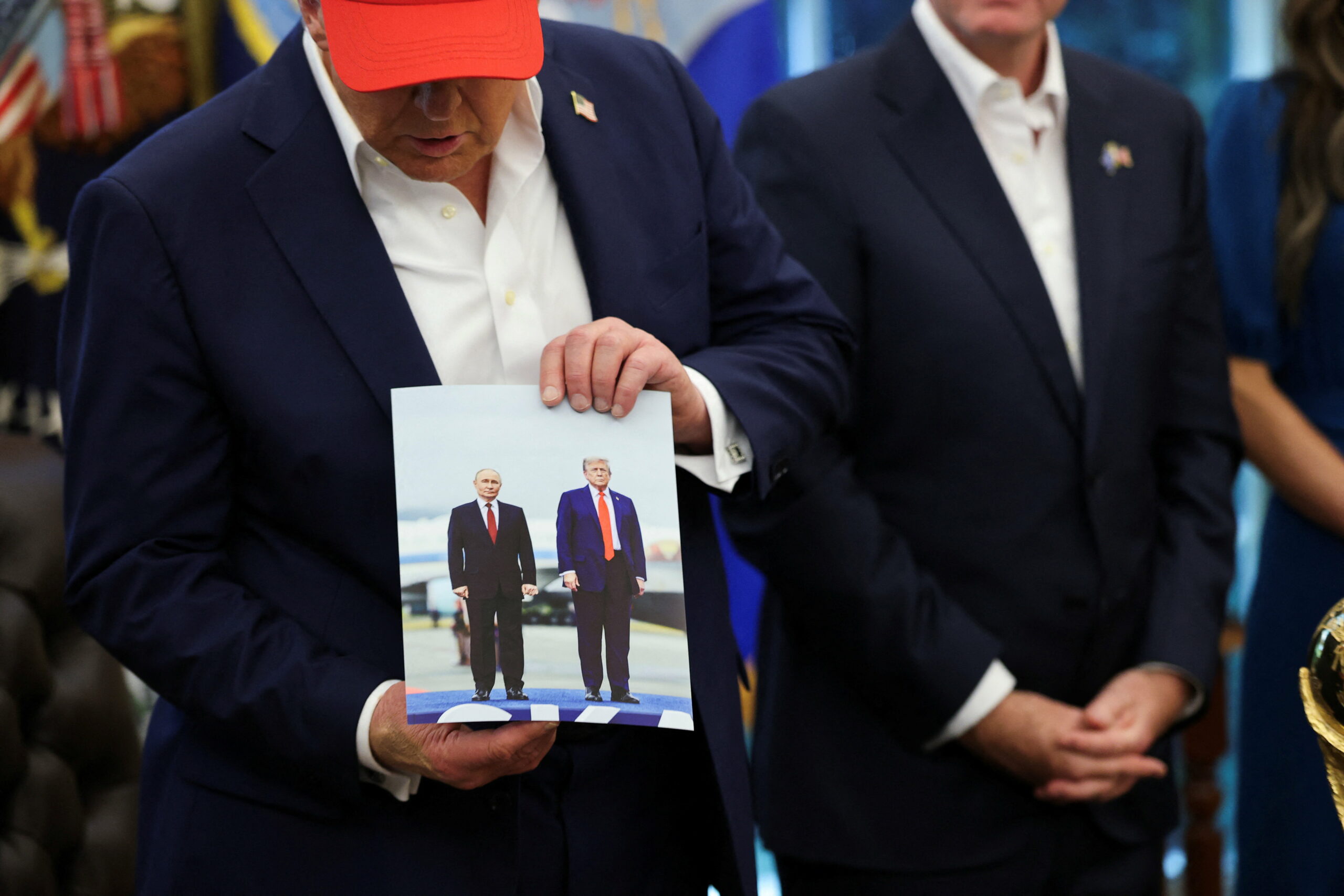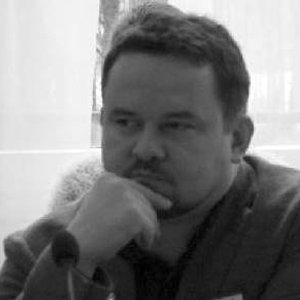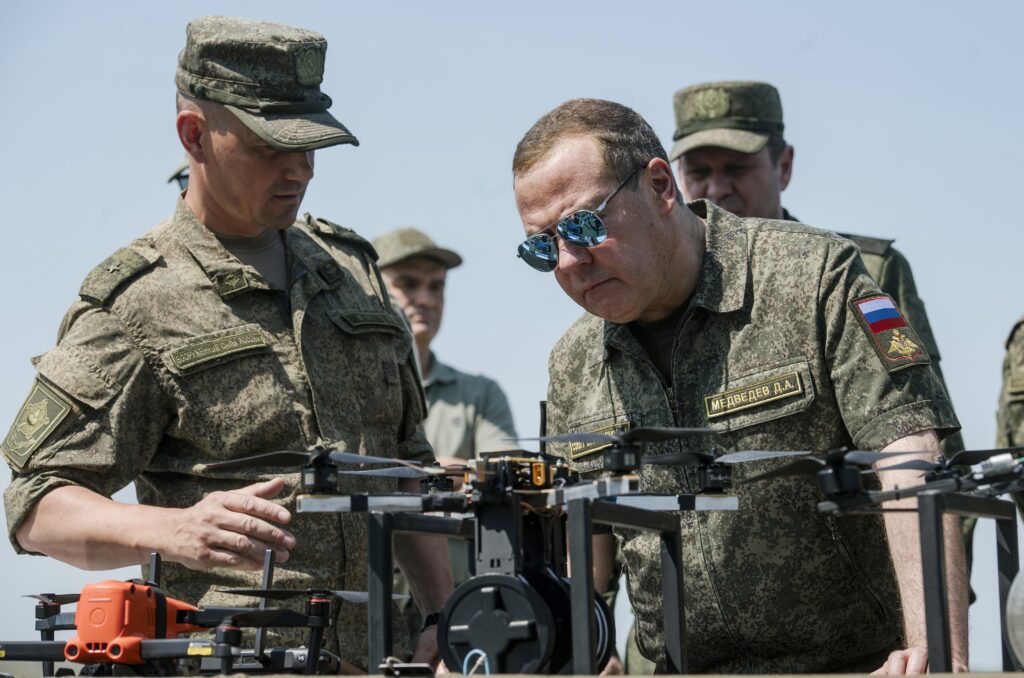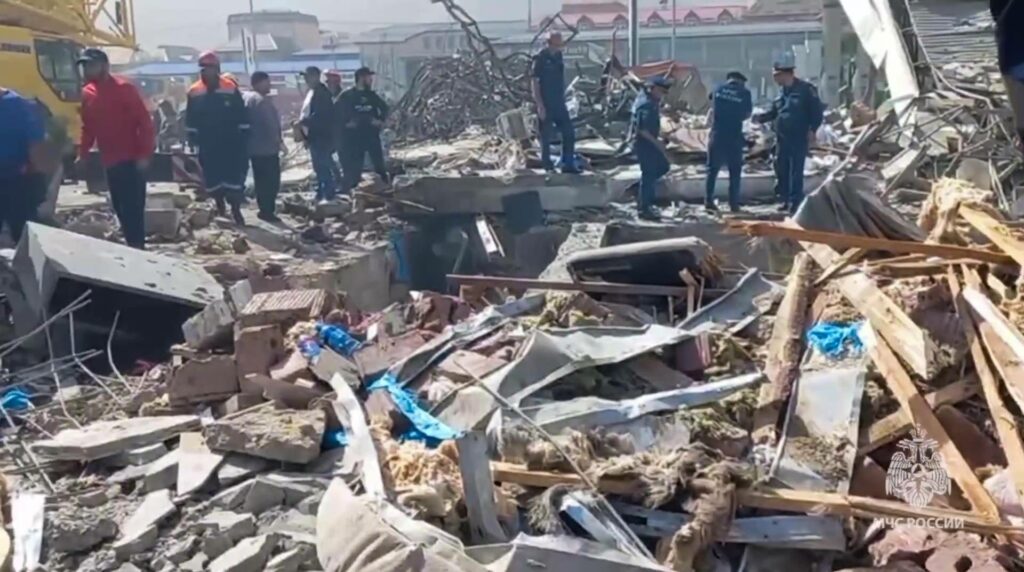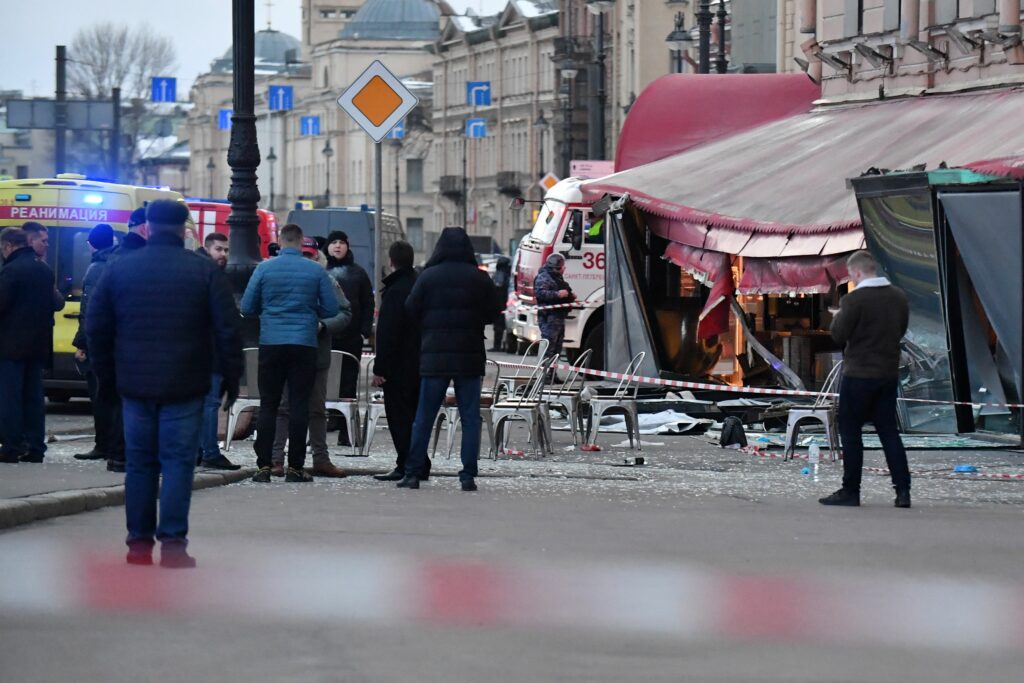It is now almost commonplace to read reports of Russia’s authorities declaring a state of emergency somewhere within the Russian Federation. It is a tendency that bears some resemblence to a similar trend of governments resorting to declaring a state of emergency almost without hesitation, observed even in European democratic states — at least according to the Italian philosopher Giorgio Agamben. However, in the case of Russia, these measures have a long history. They can be traced back most pointedly to the “Instruction (Nakaz) to the Legislative Commission of 1767” written by Catherine the Great.
In that document, the Empress justifies the inevitability of autocracy in Russia as the only way for rapid decision-making to be effective, despite huge communication inefficiencies:
“The sovereign is absolute; for there is no other authority but that which centers in his single person, that can act with a vigour proportionate to the extent of such a vast dominion. (…) It is expedient so to be, that the quick dispatch of affairs, sent from distant parts, might make ample amends for the delay occasioned by the distance of the places.”
Since then, Russia’s authorities repeatedly reproduced similar yearnings for centralized control through emergency measures, virtually until the collapse of the USSR. The use of emergency measures under Soviet rule after the Bolshevik Revolution and during Russia’s subsequent civil war shifted smoothly into Stalin’s “sovereign dictatorship.” Various states of emergency went through different stages in the Soviet era. The feigned (or political) state of emergency in the days of the fight against “enemies of the people” and external “capitalist encirclement” was replaced by a real emergency during World War II , which then was followed by other emergency moments during active points in the Cold War such as the Berlin Blockade. A full return to a feigned state of emergency could be observed by the mid-post-Stalinist Soviet regime, although individual emergency measures could also be identified with regard to the Cuban Missile Crisis, riots in Novocherkassk and other cities, the dispatch of troops to Czechoslovakia and Afghanistan, and unrest in Alma-Ata, Baku, Dushanbe and Vilnius.
Nor can post-Soviet Russia do without emergency measures in its political and economic life, although their legislative codification is different.
Contemporary Russia is one of the countries that explicitly regulates states of emergency in legislation. First of all, it is laid down in the Federal Law On Counteracting Terrorism of 6 March 2006. The legal regime described in the latest version of the law that applies to areas of an anti-terrorist operation (ATO) can be defined as pertaining to a state of emergency. For example, this is defined in Article 11, which allows the authorities to disregard a number of individual rights laid down in the Constitution of the Russian Federation, such as the inviolability of the home, the right to free movement, free access to information and communication services. Article 22, meanwhile, undermines personal integrity and the presumption of innocence: “Depriving a person who has committed an act of terrorism of life, as well as causing damage to the health and property of such a person or to other legitimate interests of individuals, society or the State, while suppressing an act of terrorism or taking other measures pertaining to the struggle against terrorism by the actions provided for or allowed by the legislation of the Russian Federation, shall be lawful.”
Shortcircuiting Human Rights
Clearly, as follows from the above, the guilt of a terrorist killed by the siloviki is determined post factum not by a court but by the siloviki themselves. Collateral damage is also legalized. The suspension of regular laws is additionally laid down in paragraph 2, Article 12. According to this provision, a decision to conduct an ATO can be taken by security services either at the federal or the local level. Paragraph 3 stipulates that the president, the prime minister, the Chairman of the Federation Council of the Federal Assembly and other officials at the federal level are notified of an ATO only “where considerable forces and facilities are required for conducting an antiterrorist operation and it is to be conducted on territory with a large number of residents.” Obviously, the establishment of a state of emergency is thus completely uncontrolled by the authorities at any level — except for executive bodies — and the siloviki control the regime and assess its results. As a result of this kind of lawmaking, one can speak of an ATO as a classic state of emergency that temporarily rules out the separation of powers, while the law itself enters a kenomatic state; that is, a legal vacuum is created. This derogation from the observation of human rights can actually be established on any territory (and abroad, according to paragraph 4, Article 6) and for any length of time, since the decision to terminate an ATO regime is made by the same person who introduced it, or their superior.
An ATO regime was introduced for the first time on the territory of the Chechen Republic by a decree of President Boris Yeltsin of September 23, 1999. Gradually, this practice became more widespread in all regions of the North Caucasus: states of emergency were declared up to several times a week in Ingushetia, Dagestan, Kabardino-Balkaria and Karachay-Cherkessia. An ATO was in place in Chechnya alone for 10 years until it was terminated in 2009. The regime in the North Caucasus can be characterized both as a feigned (political) and an authentic state of emergency, in that the latter pertains to the fight against Islamists or separatists. It is very difficult to say which component prevails, due to the lack of transparency of the authorities of the North Caucasus, the lack of independent media and non-disclosure of information by the security and law enforcement agencies. On the other hand, there is indirect evidence that the state of emergency has long become a key element of political governance in the North Caucasus; for example, a child was intentionally killed during an ATO and there are other examples of the blatant abuse of power.
Emergency Measures in Chechnya
Perhaps the regions facing immense economic and social difficulties and high levels of corruption, and characterized by a conflict-prone clan and tribal structure of political elites, deep-rooted interethnic problems and a serious impact of radical Islamism, have lost their ability to maintain political stability without a declared state of emergency that is justified by the war against terrorism. By subduing these problems, suppressing dissenters and political opponents using emergency measures, the authorities only increase tensions and create a vicious circle. Consequently, they are forced to enhance emergency measures, which are used more and more frequently to maintain order. Society can no longer distinguish between wartime and peacetime norms under a state of emergency, since it cannot follow the reasoning behind an ATO apart from instances of obvious terrorist attacks. Numerous reports of the elimination of yet another warlord are unverifiable and, most likely, this is just the tip of the iceberg. Nor have such operations been covered recently, which can easily be seen in the absence of reports in the media or activity on the HardIngush account on LiveJournal, for example. Allegedly run by a commando, the blog used to regularly cover “special operations”, posting exclusive photos and details. The account was renamed molonlabe, the stories were cleaned up, the content became more abstract, and it has not been updated for more than a year now. Obviously, neither the establishment of this account nor its retreat into the shadows can be treated as independent activity by the serviceman himself, but is related to the information policy of the security apparatus.
Taking into account that the use of states of emergency is a well-trodden path in the North Caucasus, and the legal basis has been established, one can expect them to encompass the entire territory of Russia, given the expected growth of social, economic and interethnic tensions. So far, the use of a nationwide state of emergency has been employed on rare occasions and causes open discontent – such as, for example, in the case of “the night of the long bucket teeth” in Moscow (the demolition of outlets situated next to subway station entrances during the night of February 8, 2016).
Blocked Bank Accounts, Facial Recognition Technologies
So far, the authorities have preferred to expand the use of the “security paradigm,” which allows them to exercise sufficient control, instead of states of emergency. Clearly, this control has long encroached upon personal freedoms. Russian society, by and large, is still not aware or not concerned about that. The offensive is proceeding on all fronts in the name of the “fight against terrorism”: banks are entitled to block accounts with suspicious transactions, applications with facial recognition functions are used for processing video surveillance, metal detectors are omnipresent – perhaps they’ll soon be installed at every kiosk? Not to mention subway security staff, who can frisk passengers: i.e. a person with no clear legal status can stop you and pat you down. In such a situation, the “Yarovaya legislative package” is the quintessence of what used to be known as dystopian science fiction.
The scope of control is constantly expanding: This is the heart of the security paradigm. As Barry Buzan once wrote, there is never enough security or control – they are both infinite. However, technically speaking, the implementation of control is reaching its extremes: Newly emerging projects for additional security measures will inevitably face shortages of resources, money and staff. Actually, the “Yarovaya legislative package” has run into such great difficulties that it has not been implemented after all. Is Russia at all capable of finding enough resources to create and maintain something akin to the “great firewall of China”?
That is why a more frequent use of states of emergency should be expected, since it is less costly. Most importantly, it is more common, and understandable. After all, the notorious “manual drive” is nothing else but a form of state of emergency, in which the president issues instructions to fix a playground in the Moscow suburbs or offer medical treatment to a cancer patient during a live television call-in program. This demonstrates that even such problems cannot be solved without taking extraordinary measures – a peculiar idea for a political show. It does not seem strange in Russia, though. One thing remains to be said: A state of emergency does not solve problems. It only silences dissenters and postpones problem-solving.
